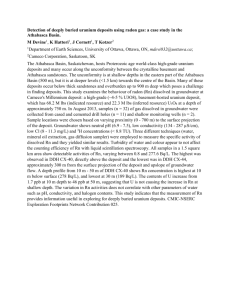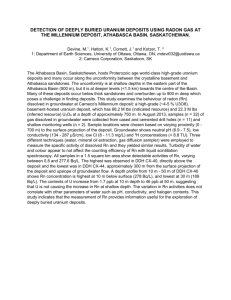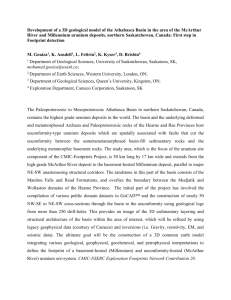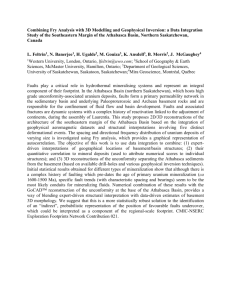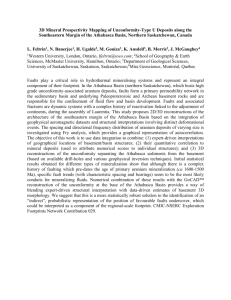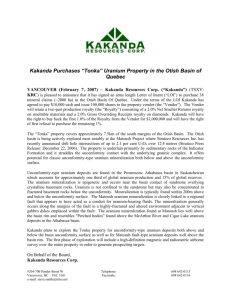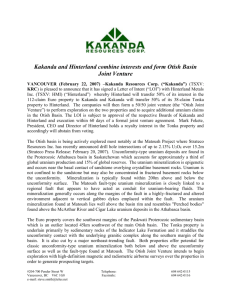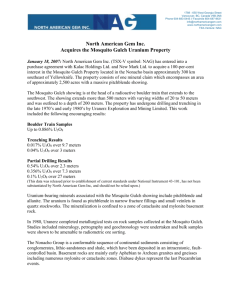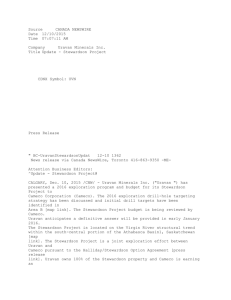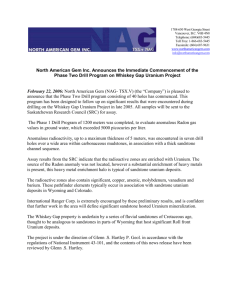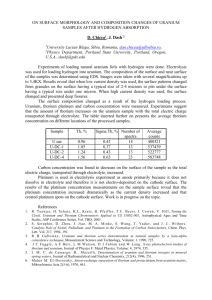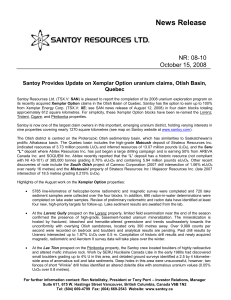017_Mary Devine_SMC Abstract
advertisement
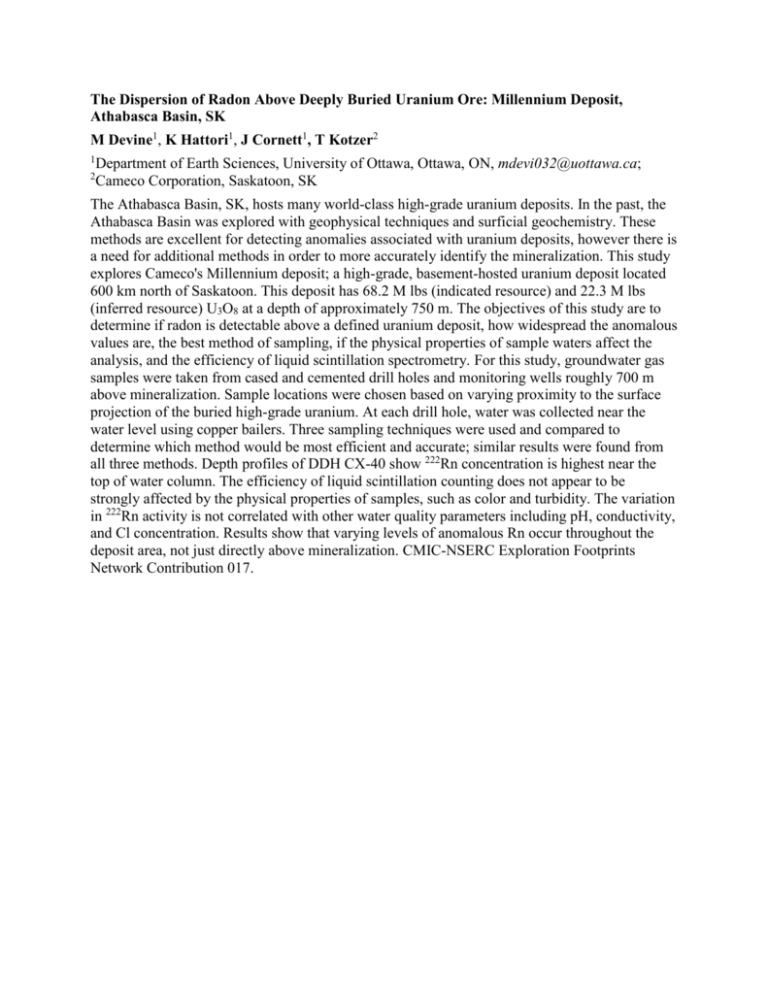
The Dispersion of Radon Above Deeply Buried Uranium Ore: Millennium Deposit, Athabasca Basin, SK M Devine1, K Hattori1, J Cornett1, T Kotzer2 1 2 Department of Earth Sciences, University of Ottawa, Ottawa, ON, mdevi032@uottawa.ca; Cameco Corporation, Saskatoon, SK The Athabasca Basin, SK, hosts many world-class high-grade uranium deposits. In the past, the Athabasca Basin was explored with geophysical techniques and surficial geochemistry. These methods are excellent for detecting anomalies associated with uranium deposits, however there is a need for additional methods in order to more accurately identify the mineralization. This study explores Cameco's Millennium deposit; a high-grade, basement-hosted uranium deposit located 600 km north of Saskatoon. This deposit has 68.2 M lbs (indicated resource) and 22.3 M lbs (inferred resource) U3O8 at a depth of approximately 750 m. The objectives of this study are to determine if radon is detectable above a defined uranium deposit, how widespread the anomalous values are, the best method of sampling, if the physical properties of sample waters affect the analysis, and the efficiency of liquid scintillation spectrometry. For this study, groundwater gas samples were taken from cased and cemented drill holes and monitoring wells roughly 700 m above mineralization. Sample locations were chosen based on varying proximity to the surface projection of the buried high-grade uranium. At each drill hole, water was collected near the water level using copper bailers. Three sampling techniques were used and compared to determine which method would be most efficient and accurate; similar results were found from all three methods. Depth profiles of DDH CX-40 show 222Rn concentration is highest near the top of water column. The efficiency of liquid scintillation counting does not appear to be strongly affected by the physical properties of samples, such as color and turbidity. The variation in 222Rn activity is not correlated with other water quality parameters including pH, conductivity, and Cl concentration. Results show that varying levels of anomalous Rn occur throughout the deposit area, not just directly above mineralization. CMIC-NSERC Exploration Footprints Network Contribution 017.
